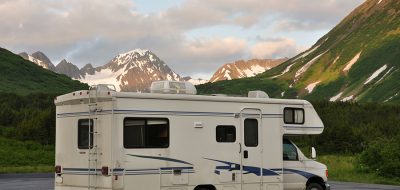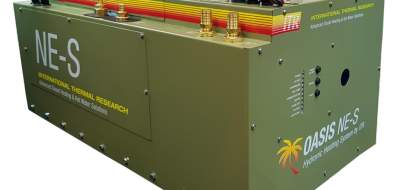 Recreational vehicles are equipped with either a stand-alone forced air furnace or a hydronic heating system. Both of these RV heating systems require regular maintenance to keep them running efficiently and to provide reliable service. Today we will look at what service is needed to the hydronic system types.
Recreational vehicles are equipped with either a stand-alone forced air furnace or a hydronic heating system. Both of these RV heating systems require regular maintenance to keep them running efficiently and to provide reliable service. Today we will look at what service is needed to the hydronic system types.
Two of the popular manufacturer makes are Aqua-Hot and Oasis. Though they differ somewhat in design, the required maintenance is basically the same. They are designed to heat both the interior of the RV and the hot water supply. They are equipped with 120 volt AC electric heater element(s) and a diesel fired burner. (Propane versions are also available on some models.) Many are also plumbed to allow the hot engine glycol to pass through them while driving to provide constant heat even while travelling.
The heat provided by one of the fore mentioned methods, heats a non-toxic propylene glycol heat exchanger that in turn heats a small reservoir of fresh water. The hot glycol also is circulated to several individual fan equipped air handlers that are strategically located throughout the coach interior. Each of these has their own temperature sensors and operates independently on demand. The interior temperature is far more uniform throughout the cabin than the single forced air furnace. In addition, the hot water heating is capable of near instant hot and continuous operation.
Okay, let’s look at what is needed to keep these operating properly.
- Replace the burner nozzle once a year. While many will run trouble free for two or more years, I would not recommend this extended time unless you are always going to be in a non-freezing environment. When they fail, it is sudden. You generally cannot make it limp along while you seek service.
- Check the hydronic overflow tank level and top up, if necessary.
- Replace the fuel filter at the same frequency as the burner nozzle.
- Check for any leaks from the main assembly. Move the cover and check that all lines and fittings are dry. Tighten if needed.
- Replace the electric heating element every 3 years.
Most common issues that may be encountered.
Failure to ignite. Symptom – exterior fan starts then shuts down 1 to 2 minutes later without ignition. Causes may be: (1) Burner nozzle plugged. Replace nozzle. (2) Main fuel tank below ¼ of a tank there fore above auxiliary suction tube. Fill tank.
Failure to keep running. Check fault code as per user manual. Sensor failure possible.
Sensor failure. Check and determine if sensor fault is actual problem.
Sensor fault incorrect. Jump the two lines that attach to sensor with standard auto fuse.
Do not jump sensor if you have not positively confirmed that the indicated problem is not present. This can cause a fire and possible danger.
The hydronic heating system is an extremely efficient method for both interior and water heating. With a little maintenance it will provide great service for many years.




